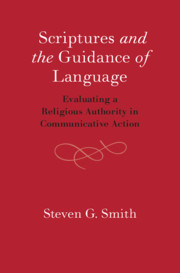Book contents
Bibliography
Published online by Cambridge University Press: 05 October 2018
- Type
- Chapter
- Information
- Scriptures and the Guidance of LanguageEvaluating a Religious Authority in Communicative Action, pp. 298 - 310Publisher: Cambridge University PressPrint publication year: 2018



